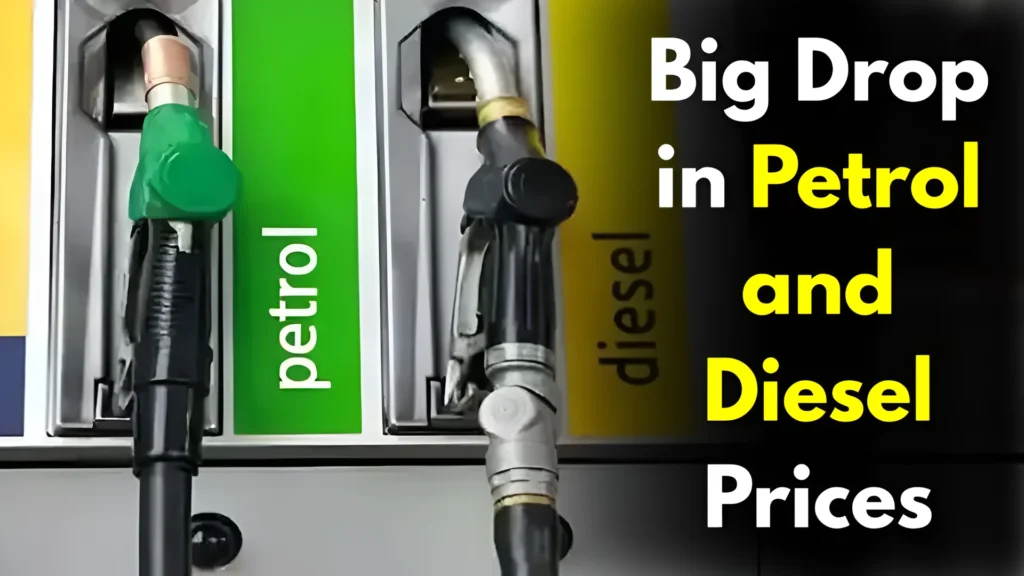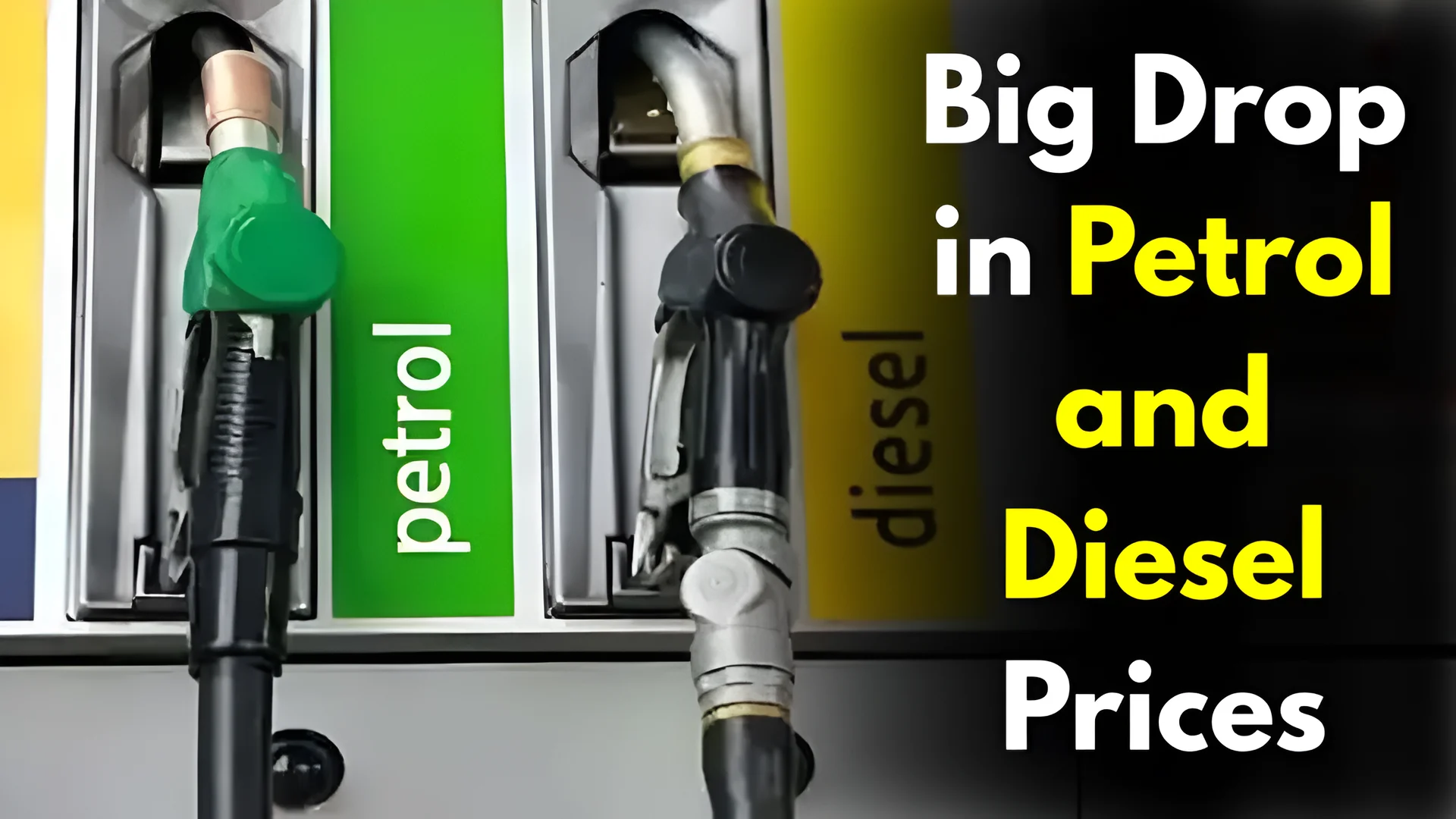A much-needed relief has finally arrived for vehicle owners and transport businesses across the country. After months of steady or rising fuel costs, petrol and diesel prices have dropped significantly. The new rates, which come into effect today, are being welcomed with open arms by consumers and industries alike.
Fuel prices in India are revised daily based on global crude oil trends and exchange rates. With this latest adjustment, petrol and diesel rates have fallen in most states, giving consumers a break from the high costs they’ve become used to. Whether you’re a daily commuter, a logistics operator, or someone planning a long trip, the impact of this drop will be felt immediately.

Reasons Behind Price Cut
Several factors have contributed to this reduction in fuel rates. One of the main reasons is the recent dip in global crude oil prices. The international oil market has seen some softening, which has allowed oil marketing companies in India to reduce the selling price of petrol and diesel.
Another key factor is the slight strengthening of the Indian rupee against the dollar, which reduces the cost of oil imports. With crude being bought in dollars, a stronger rupee translates into cheaper fuel at home. Additionally, internal pricing mechanisms and better inventory management by oil companies have helped pass on the benefits to end consumers.
While taxes and duties from both central and state governments still make up a large part of the price paid at the pump, this recent drop shows that oil companies are now in a position to offer some relief without cutting too deep into their margins.
Difference In City Prices
It’s important to understand that fuel prices in India vary by region. This is largely due to the different levels of VAT (Value Added Tax) imposed by state governments. As a result, the drop in prices will not be uniform across the country.
For instance, metro cities may see a slightly smaller reduction compared to some smaller towns and rural areas. States that have higher local taxes may still have higher prices overall, even after the recent cut. However, the overall trend remains positive, with reductions seen across most districts.
Consumers are advised to check the exact price in their respective areas through official fuel apps or by visiting local filling stations. The difference might only be a few rupees per litre, but over time, it adds up to a noticeable saving.
Relief For Common People
This drop in fuel prices comes as a huge relief for common citizens who rely on their vehicles for daily travel. With the cost of living already on the rise due to inflation, cheaper petrol and diesel will help ease some financial pressure.
Daily commuters, whether using cars, bikes, or public transport, will likely see a small but important reduction in monthly expenses. Even auto-rickshaw and taxi fares, which are often adjusted based on fuel rates, may see some easing in the coming weeks if prices remain stable.
Middle-class households, already burdened by groceries, rent, and utility costs, are likely to view this fuel price drop as a welcome change, however temporary it may be.
Impact On Transport Sector
The transport and logistics sector is among the biggest consumers of diesel in the country. A fall in diesel prices directly affects operational costs for trucks, delivery vehicles, buses, and even trains to some extent.
Logistics companies that rely on road transport will benefit from improved margins, which may also reduce freight costs. This can have a cascading effect on the prices of essential goods that are transported across states, potentially slowing the rise in retail prices.
Taxi operators and fleet owners are also likely to benefit from the reduced fuel costs. For businesses that operate large fleets, even a ₹1 reduction per litre can result in substantial monthly savings. While the impact may not be immediate, it could help stabilize transportation tariffs in the near future.
Boost For Business Sentiment
The timing of this price drop is significant. With the festive season around the corner, businesses were already facing increased demand and logistical pressure. Lower fuel costs mean reduced overheads, better profit margins, and potentially more competitive pricing.
Small traders, delivery services, and e-commerce platforms are also likely to feel the difference. With deliveries forming a major chunk of customer service in today’s economy, fuel prices are closely tied to business performance, especially for small and mid-sized enterprises.
Additionally, industries that rely on fuel-powered machinery such as construction, mining, and agriculture could also benefit, depending on how long the lower prices are sustained.
Possible Short-Term Effect
While this drop is certainly good news, it’s important not to assume this trend will continue indefinitely. The fuel market is highly dynamic and closely linked to geopolitical developments, oil supply levels, and fluctuations in the international market.
Even small disturbances in oil-producing regions, or currency depreciation, can push prices up again quickly. That’s why this current drop should be viewed as temporary relief rather than a permanent shift.
Consumers are advised to use this opportunity wisely, possibly by cutting down on unnecessary travel, or even by considering more fuel-efficient transportation options.
Environmental Considerations Remain
One of the indirect effects of cheaper fuel is the tendency for consumers to drive more or delay switching to greener alternatives. Electric vehicles, hybrid cars, and public transport solutions tend to receive more attention when fuel costs are high.
With the drop in prices, this shift might slow down temporarily. Government policies and incentives for clean energy vehicles will need to remain strong to ensure that short-term affordability does not derail long-term sustainability goals.
Still, for those who were already planning a vehicle upgrade, this could be the right time to explore alternatives that offer better mileage or use less fuel overall.
Government May Review Taxes
There’s also the possibility that the government may use this window to review fuel taxation policies. With lower base prices, some states might look to adjust their VAT rates to make up for lost revenue. Similarly, discussions around central excise duties could resurface, especially if prices remain low for an extended period.
That said, the government will also be cautious not to disrupt the current wave of positive sentiment, especially with elections due in several states over the next few months.
Any major tax change, whether upward or downward, will likely be influenced by political timing and fiscal needs. For now, however, the public can enjoy the relief without worrying about immediate tax hikes.
Final Thoughts Today
The sudden drop in petrol and diesel prices has brought much-needed comfort to the public and several industries. Whether it lasts or not, the impact will be felt across daily life, business operations, and transport economics.
While fuel rates may continue to fluctuate in the long run, today’s price drop offers short-term gains for everyone from a two-wheeler rider to a national logistics company. Consumers, however, should remain alert and make the most of the current prices while they last.
Disclaimer: Fuel prices are subject to daily revisions and may vary by location. This article is for informational purposes only and does not constitute financial or investment advice.
